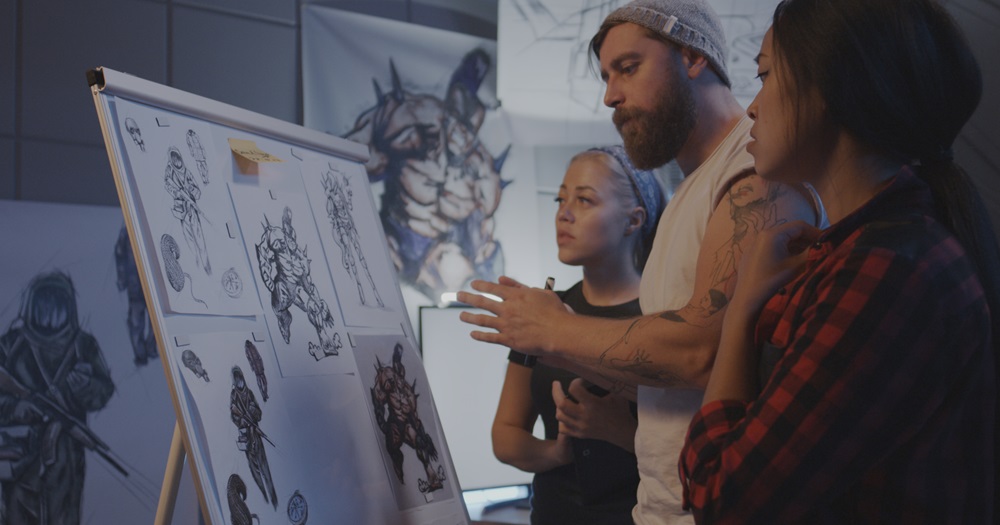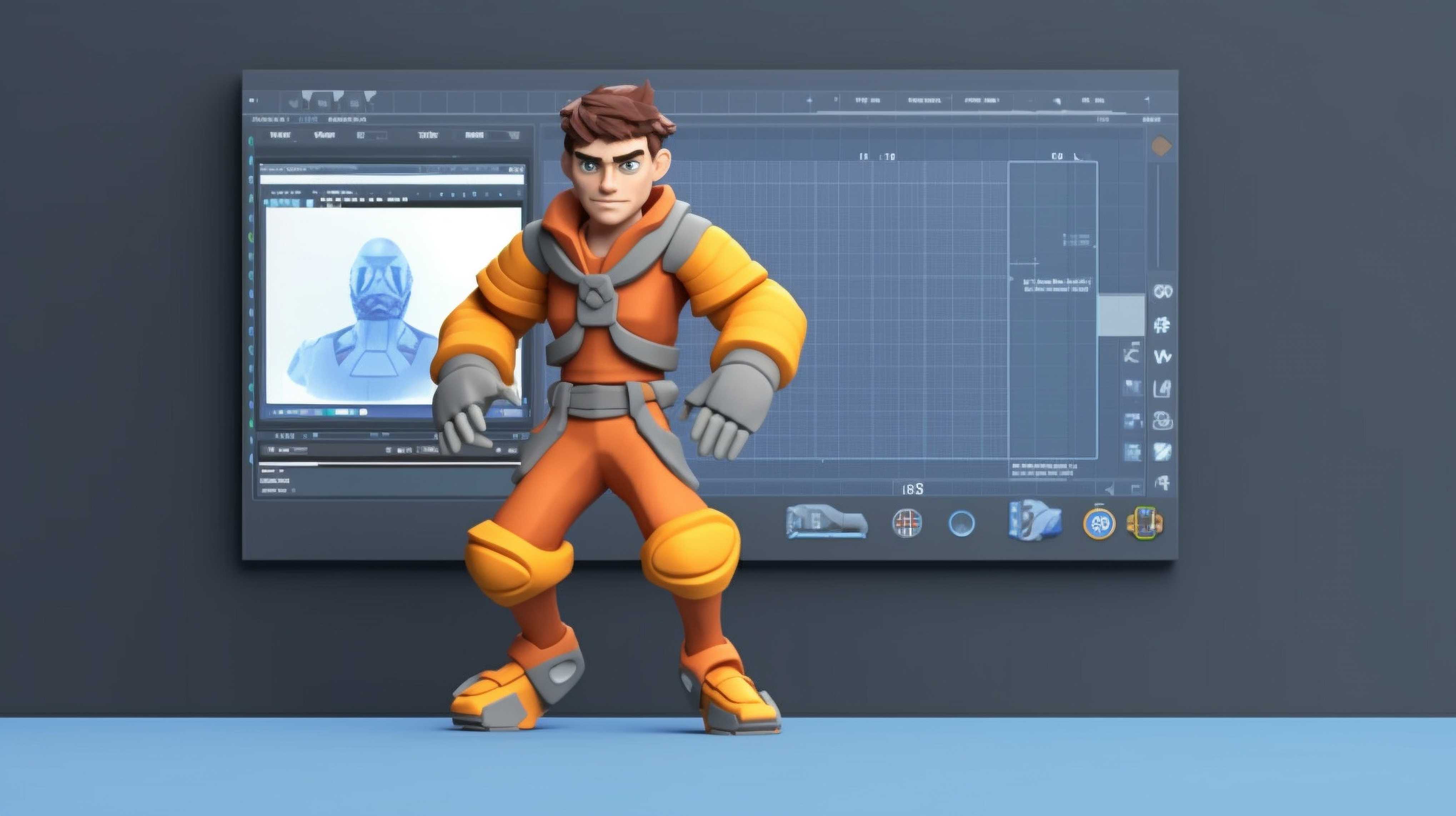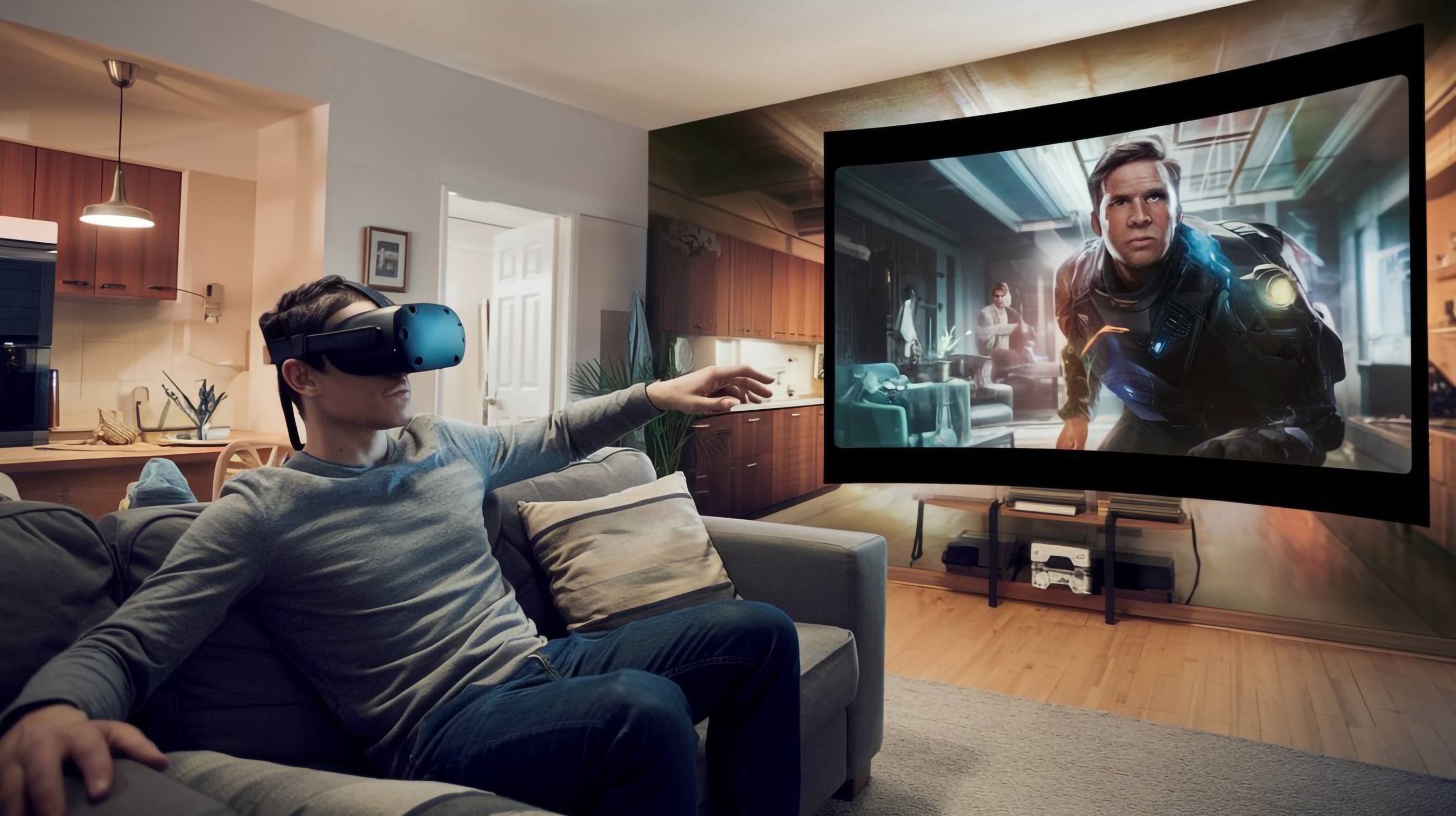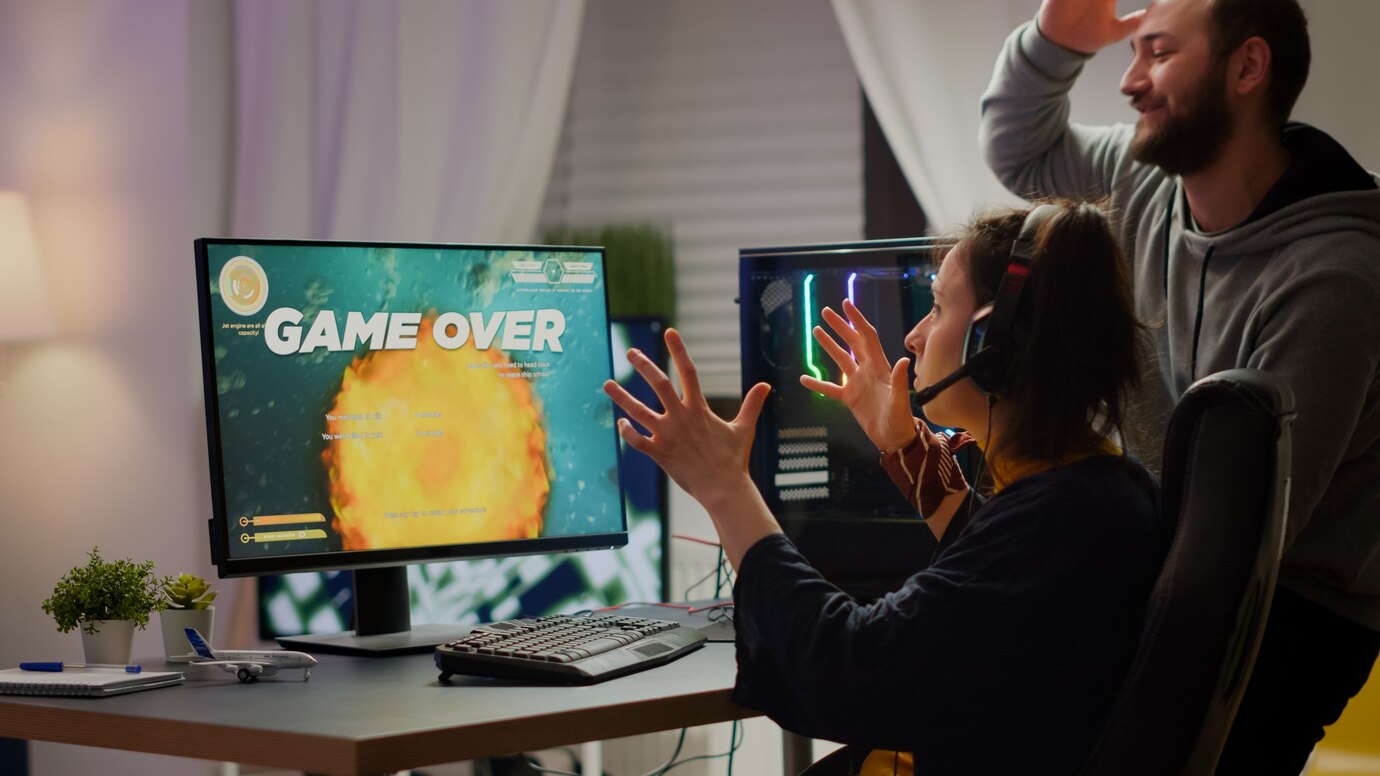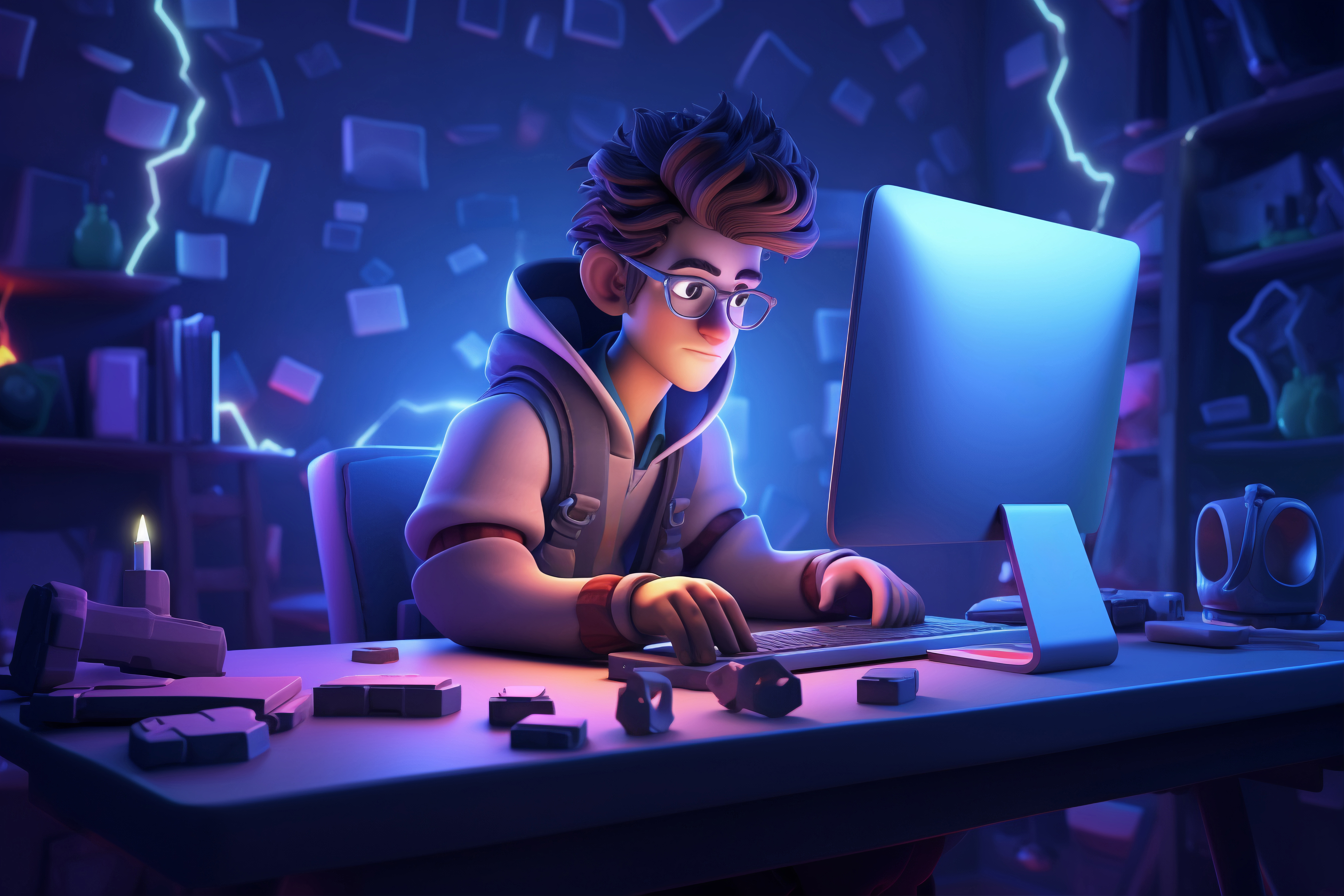The game development process is a vector for collaboration among experts from varied fields. It is a culmination of the work of programmers, artists, writers, VA artists, marketers, and more.
In this blog piece, we focus on the work done to realize the different game art styles.
Now, you may not always have a game artist in your game development studio. There can be numerous reasons for this. Maybe you are a smaller studio, or the artist you have is not well-versed in a certain art style, or is busy with other work, etc.
But, no matter the reason, a lack of on-hand human resources can be solved through game art outsourcing.
At EDIIIE, we believe in empowering people through knowledge. As you continue reading, we will answer all the questions you might have and clear your doubts on game art outsourcing: what it is, its significance, different methods to do it, and more.
Let’s begin!
The Guide to Game Art Outsourcing
To outsource game art is to hire external art studios or freelancers to create the visual assets for your game. On the flip side, you can have in-house game art creation.
Outsourcing means access to a diverse range of visuals like:
- 3D character design
- Environment modeling
- UX and UI design
- Character animation
- Texture and material design, etc.
Benefits of Outsourcing Game Art
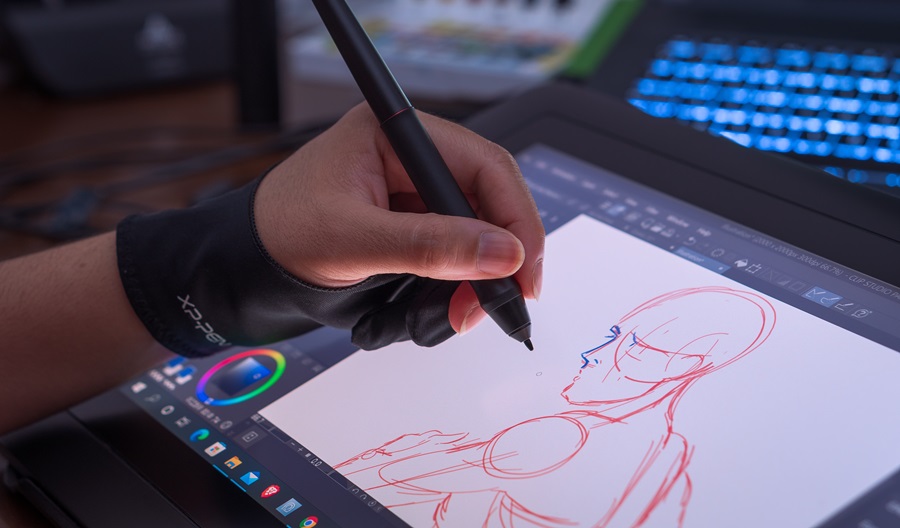
There are a plethora of advantages that make it the smart and right choice to outsource art design:
Cost-effectiveness: Outsourcing can be quite budget-friendly. This comes from the reduction in costs associated with in-house artists such as salaries, benefits, software licenses, and equipment maintenance. For instance, it becomes easier to manage blocks like character design cost.
Expertise: Outsourcing gives you access to a wider talent pool. This becomes a necessity when you need artists who specialize in a unique art style.
Flexibility: It is far easier to scale up or scale down an external team, depending on the project requirements, deadlines, and budget.
Time-saving: When the art is outsourced, and being taken care of by several people, the in-house team can focus on other aspects of the game design process. These are things like programming, game mechanics, narrative arcs, etc.
Localization: Through outsourcing, it becomes easier to create art styles unique to a particular culture. This is critical for games with international releases.
The Ways of the Outsourcing
Just like its many advantages, there are many avenues you can take up in deciding how to outsource your game art:
1. Freelance artists
You can hire freelancers who specialize in a certain game art style. Services like Artstation, Behance, and Upwork can help you find and hire them. This avenue comes with a lot of flexibility, open communication and is perfect for smaller studios or smaller projects.
2. Art studios
Partnering with an established game development studio gives you access to their game art design team. This solution provides a better structure and communication for larger projects.
EDIIIE, a game design and development studio, offers exceptional game art services.
3. Offshore art outsourcing
Outsourcing to countries like China, India, or in Eastern Europe helps with large-scale or ongoing projects. Thanks to lower labor costs, both freelancers and established game design studios become affordable.
There will be considerations in terms of communication due to time-zone differences. Moreover, special focus must be given to quality control and protecting intellectual property.
4. Crowdsourcing or contests
Artists can submit their work based on the requirements you provide. You can then choose from the candidates and only pay for the ones you wish to use.
Websites like 99designs or Crowdspring work this way.
With that said, quality control and communication may take a bit of a hit.
5. Managed art outsourcing services
Intermediaries like a game art outsourcing studio can handle the work for you. They can take care of the recruitment, project management, quality control, and communication.
It may cost more than other options but offers a more hands-off approach.
6. Hybrid approach
This solution entails that you make the in-house and the outsourced service providers work together. You may assign specific tasks to the outsourced team while keeping the art direction and creative control with the in-house team.
This method provides flexibility while being cost-effective for medium to large-scale projects.
Factors to Consider when Outsourcing Game Art

As you look through the people and entities that provide the services you need, you may want to keep a few things in mind:
Art Style and Quality
Be clear in your desired art style, aesthetic, and level of detail. It always helps to see the artists’ previous works.Technical Requirements
Specify your technical needs in file formats, resolution, polygon counts, and texture sizes. With this in check, you can provide the necessary tools and clear guidelines on asset naming conventions, folder structures, and version control.Communication and Collaboration
Establish clear communication channels and protocols. You may use services like Trello or Asana for this. It will help you discuss updates, address concerns, and ensure alignment.
Timelines and Milestones
It is important to set realistic goals for the outsourced team. This will give them time to handle revisions and unexpected issues.
Budget and Payments
Be clear with your scope of work, artist experience, and market rates. This will come in handy with negotiations.
Intellectual Property (IP) and Contracts
IP can be tricky. Define IP ownership and usage rights to the created assets in no uncertain terms. Having the outsourced team sign non-disclosure agreements (NDAs) can help protect sensitive information.
Cultural and Language Differences
When working with a team spread out across the globe, it is natural to face cultural and language barriers. Be respectful and mindful of these differences.
Quality Assurance (QA) and Feedback
QA is critical to the feedback and iterative improvement process. It is also important that the feedback is constructive and specific to ensure that the team can improve their work.
Integration and Asset Management
Create an effective asset management system to organize, track, and version control the art files. Ensure that all are aware of this system and know how to use it properly.
Long-term Relationship and Scalability
Allow a positive and collaborative space to develop. This can translate to long-term partnerships based on trust, communication, and mutual respect.
Conclusion
With the merits, methods, and modifiers of game art outsourcing now on the table, you can begin your search. Outsourcing will not simply be the means to an end but a fruitful and sustainable business relationship that benefits all parties.
At EDIIIE, we know the pain point of the game art design and its significance to gameplay. If you wish to know more about this process or wish to hire a competent game art outsourcing company, just book a consultation.



